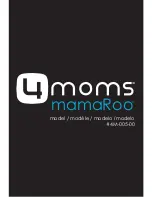
User's Guide ADI-8 DD © RME
27
11.3 Clock De-coupling using the SRC
Master-slave problems occur at the latest with the use of a digital mixer. For 'normal' use of
CD-player, DAT and harddisk recording, the tasks are clearly defined. The device playing back
is the master in each case, the recording device the slave. The CD-player delivers the clock
and the DAT synchronizes to it.
When working with a digital mixer, the CD-player would be the master and the mixer the slave.
This model breaks down with a single stroke, if a DAT is also being connected, which is not
recording, but also playing back. Every digital device can only synchronize to one source, the
audio data of the other sources is processed with errors due to missing synchronization. Clicks
and drop outs are the consequence.
Normally, the mixing console works as master and delivers a reference signal (word clock) to
all other devices. But this is only possile, if the other devices have a sync input, i. e. are capa-
ble of being slaved. In a studio with digital tape machine, digital effects and harddisk recording,
common CD-players and DATs cannot be connected to the mix section of the console, simply
because they cannot be synchronized.
This is no problem, if a sample rate converter is being used. It synchronizes any input signal to
the desired sampling rate, re. the desired clock reference.
By this, any device can be connected via the ADI-8 DD to any other device in a studio with a
central clock, independant from its original capabilities. Instead of the CD-player or the DAT,
the ADI-8 DD is the slave now.
11.4 The SRC as Signal Conditioner
DAT tapes often show little formatting errors between the various recorded takes. There can
also be tiny snippets with other sample rates between the recordings. An SRC converts this
patch-work reliably into a continuous permanently valid data stream with a fixed sample rate.
Even if there are unformatted spots on the tape, or the DAT is being stopped or switched off,
the ADI-8 DD delivers a constant signal (which does of course not contain audio information in
this case).
The use as supplier of an uninterrupted data stream is also helpful for applications, that would
otherwise suffer from functional errors or automatic switch-off of devices. Thanks to the SRC,
the ADI-8 DD always delivers a constant output clock, no matter if the inputs are not being used
at the moment, are just being connected or have been used all the time.
Содержание ADI-8 DD
Страница 30: ...30 User s Guide ADI 8 DD RME 14 Block Diagram...






































